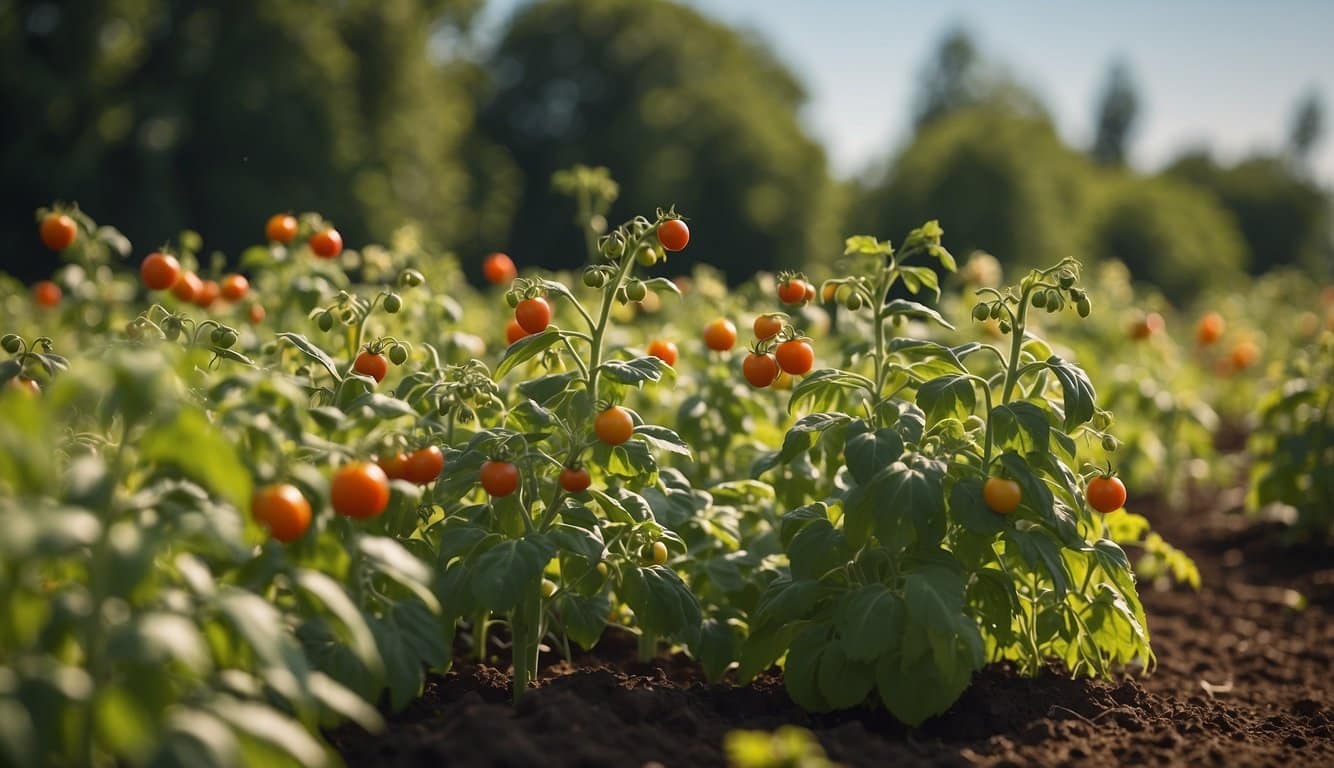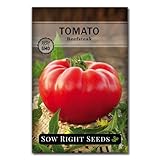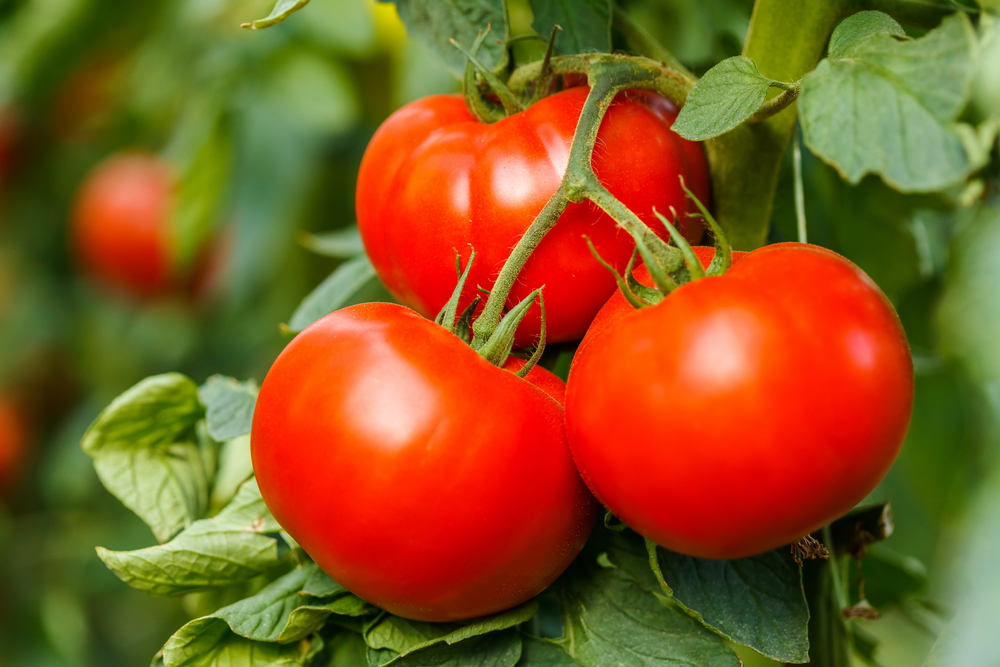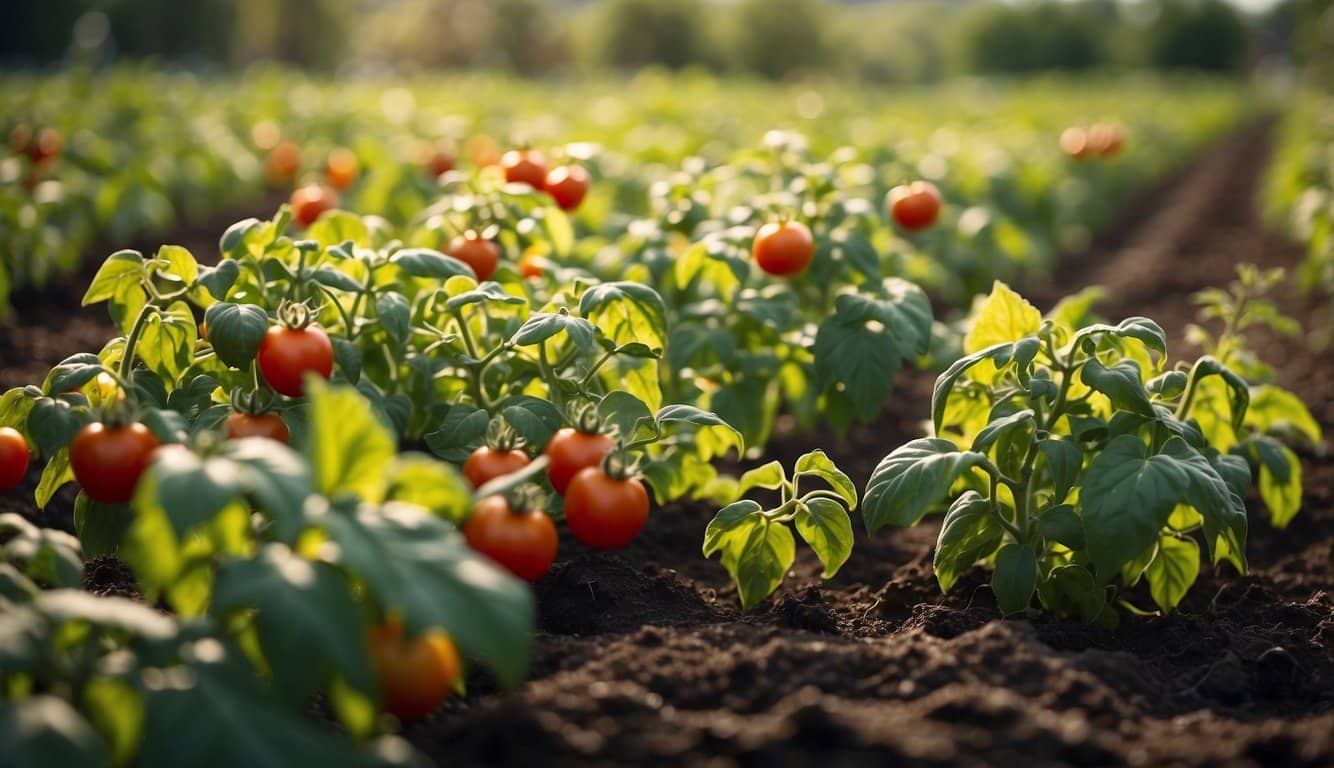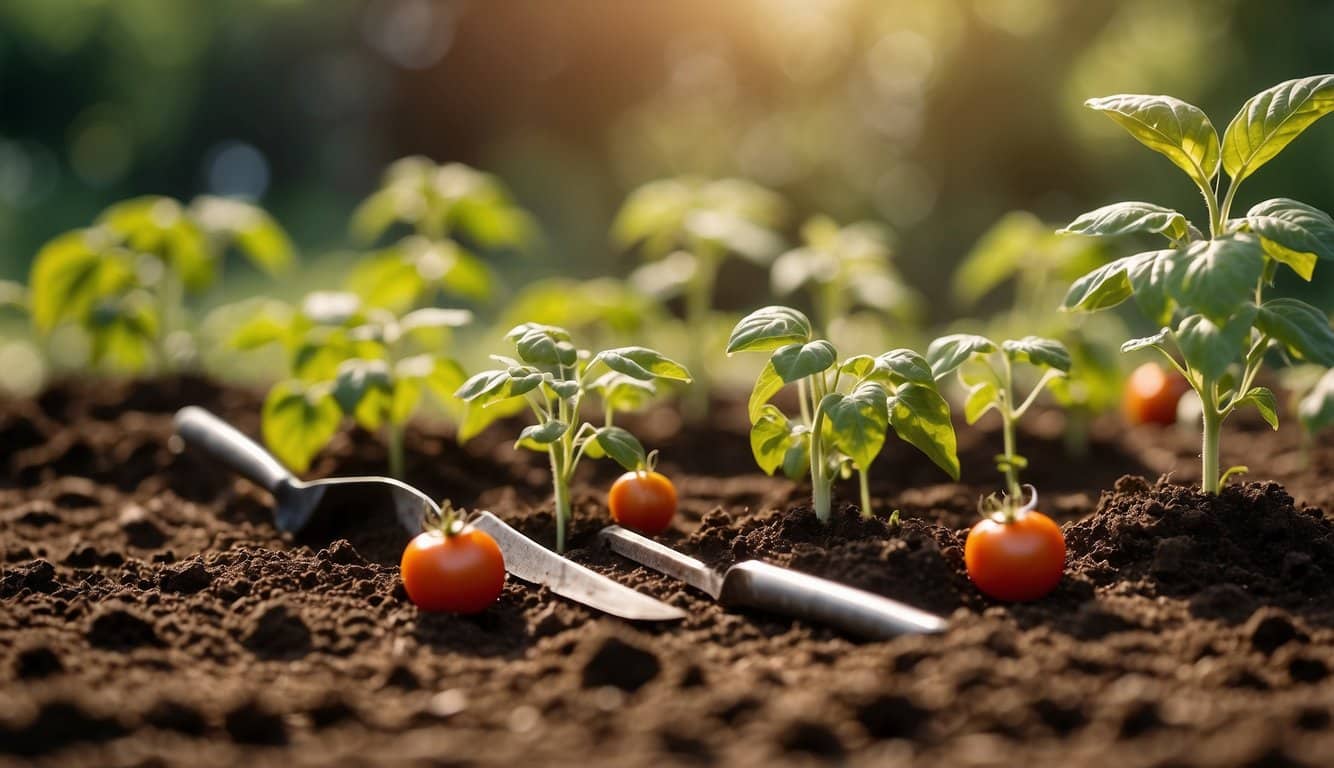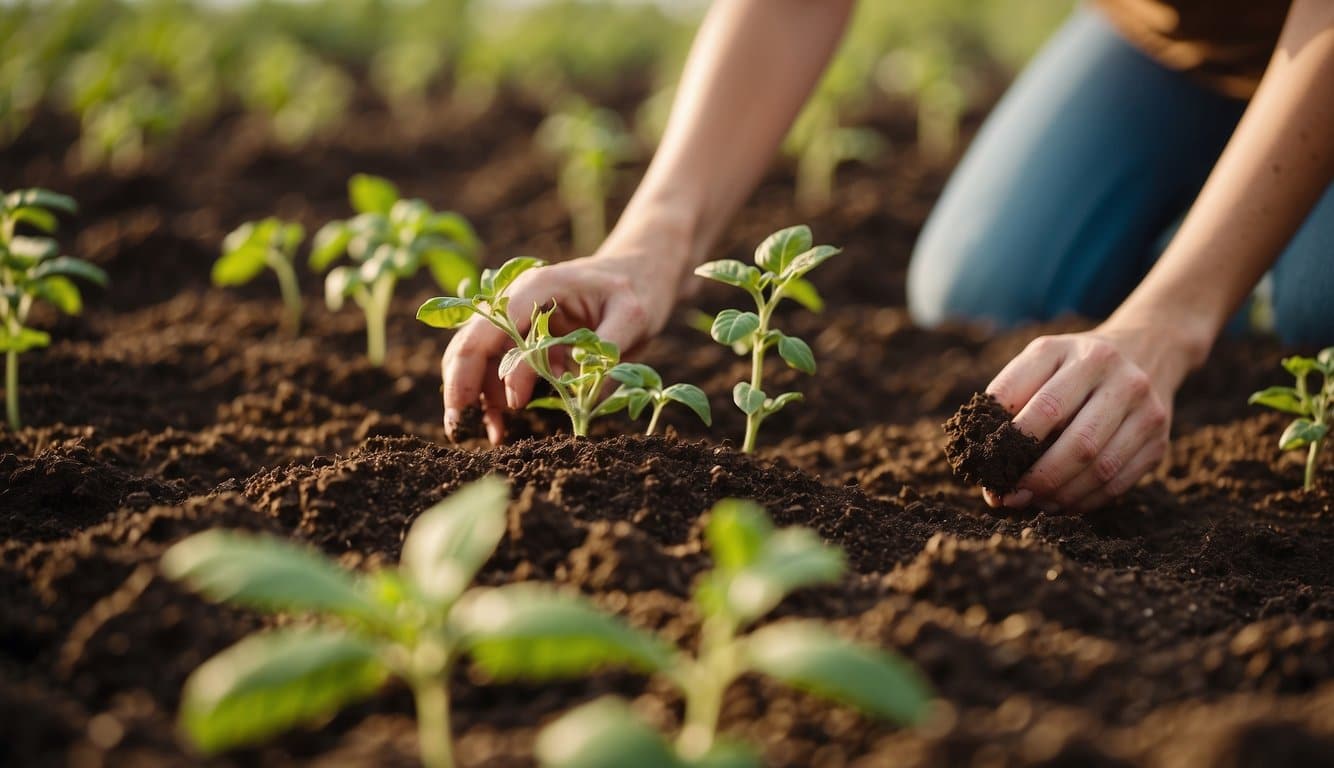| Question | What’s the best time of year to plant tomatoes in Illinois? | More Info |
|---|---|---|
| Answer | After the last expected frost in spring. | Northern Illinois: Typically after May 15.
Central Illinois: After May 1. Southern Illinois: Late April to early May. |
| Fall Planting | Not commonly practiced due to early frosts. | Consider a second, smaller crop in early August in Southern Illinois for a late fall harvest. |
| Seed Starting Indoors | Start seeds indoors 6-8 weeks before the last frost date. | This gives tomatoes a head start, especially important in Northern and Central Illinois. |
Tomatoes are a beloved garden staple in Illinois, but when is the best time to plant them?
The answer to this question can vary based on a number of factors, including the region of Illinois you live in, the type of tomato you want to grow, and the weather conditions for the year.
In this article, we’ll explore the best time of year to plant tomatoes in Illinois and provide some tips for ensuring a successful harvest.
Illinois experiences a humid continental climate. This means you can expect warm, humid summers and cold, snowy winters.
Best Planting Time
Typically, the tomato planting season in Illinois stretches from late May to early October. However, these dates might shift slightly each year.
Soil Needs
Tomatoes do best in well-drained, fertile soil with a pH level between 6.0 and 7.0. If your garden soil doesn’t drain well, adding organic materials like compost or peat moss can improve its quality.
Choosing Tomato Varieties
Picking the right type of tomato is key to your gardening success. Some varieties are more suited to cooler climates, while others prefer the heat. Here are a few options:
- Determinate Tomatoes: Great for those with limited space, as they grow to a certain height and then stop.
- Indeterminate Tomatoes: These plants continue to grow and produce fruit all season long.
- Heirloom Tomatoes: Offer unique flavors and colors but might be a bit more challenging to grow compared to hybrids.
Illinois is Long, Where You Live Will Determine Your Start Date
Illinois has a humid continental climate, with hot summers and cold winters.
The average growing season in Illinois is from late May to early October, but the exact dates can vary depending on the year.
Temperature Variations
The temperature variations in Illinois can be significant.
The summers can be hot and humid with temperatures ranging from 70 to 90 degrees Fahrenheit.
The winters can be cold with temperatures ranging from 20 to 40 degrees Fahrenheit.
The temperature variations can impact the growth and development of tomatoes.
Frost Dates
Frost dates are important for determining the best time to plant tomatoes in Illinois.
The last frost date in Illinois is typically around April 15th, but it can vary depending on the region.
It is important to wait until after the last frost date to plant tomatoes because they are sensitive to cold temperatures.
Tomatoes should be planted when the soil temperature is above 60 degrees Fahrenheit.
Selecting the Right Tomato Varieties
When it comes to selecting the right tomato varieties to plant in Illinois, there are several factors to consider.
The climate and soil conditions in Illinois are generally favorable for growing tomatoes, but it is important to choose varieties that are well-suited to the region.
One important consideration is the type of tomato. There are two main types of tomatoes: determinate and indeterminate.
Determinate tomatoes grow to a certain height and then stop, while indeterminate tomatoes continue to grow and produce fruit throughout the growing season.
Determinate tomatoes are often preferred by gardeners who want to harvest all of their tomatoes at once, while indeterminate tomatoes are better for gardeners who want a steady supply of tomatoes throughout the season.
Another important consideration is the size and shape of the tomato.
Some varieties, such as cherry tomatoes, are small and easy to grow, while others, such as beefsteak tomatoes, are larger and require more care.
It is also important to consider the flavor and texture of the tomato.
Some varieties are sweeter or more acidic than others, while some are more fleshy or juicy.
Here are some popular tomato varieties that are well-suited to growing in Illinois:
- Early Girl: This is a popular variety that produces medium-sized, flavorful tomatoes early in the season.
- Celebrity: This is a disease-resistant variety that produces large, meaty tomatoes.
- Roma: This is a determinate variety that produces firm, meaty tomatoes that are ideal for sauces and canning.
- Cherokee Purple: This is an heirloom variety that produces large, flavorful tomatoes with a deep, rich color.
- Sweet 100: This is an indeterminate variety that produces clusters of small, sweet tomatoes throughout the season.
Preparation for Planting
Soil Preparation
Before planting tomatoes, it’s important to prepare the soil.
Soil should be well-drained and rich in nutrients. The ideal pH level for tomato plants is between 6.0 and 6.8.
A soil test can help determine if the soil is lacking in any essential nutrients. If the soil is lacking in nutrients, it can be amended with compost or fertilizer.
Starting Seeds Indoors
Starting tomato seeds indoors is a great way to get a head start on the growing season.
Seeds should be started 6-8 weeks before the last expected frost date. This allows the plants to mature and be ready for transplanting when the weather warms up.
To start seeds, fill a container with seed starting mix and plant the seeds according to the package instructions.
Keep the soil moist and warm, around 70-75 degrees Fahrenheit, to encourage germination.
Once the seeds have sprouted, move them to a sunny windowsill or under grow lights.
It’s important to harden off seedlings before transplanting them outside.
This involves gradually exposing them to outdoor conditions, such as wind and sun, over a period of a week or two. This helps the plants adjust to the new environment and reduces the risk of transplant shock.
Planting Timeline in Illinois
When it comes to planting tomatoes in Illinois, timing is everything.
The best time to plant tomatoes in Illinois is after the last frost has passed. The average last frost date in Illinois varies depending on the region.
Here is a breakdown of some of the bigger regions in Illinois and when to start planting tomatoes based on which area you might live in or closest to:
- Northern Illinois: Late May to early June
- Central Illinois: Mid-May to late May
- Southern Illinois: Early May to mid-May
It’s important to note that these dates are estimates and can vary depending on the year.
It’s always a good idea to keep an eye on the weather forecast and adjust your planting schedule accordingly.
Before planting tomatoes, it’s important to prepare the soil.
Tomatoes prefer well-drained, fertile soil with a pH of 6.0-7.0.
If your soil is not well-drained, you can amend it with compost or other organic matter to improve drainage.
When planting tomatoes, make sure to give them plenty of space.
Tomatoes should be planted about 2-3 feet apart, with rows spaced about 3-4 feet apart. This will allow for good air circulation and help prevent disease.
Once planted, tomatoes should be watered regularly.
They require about 1-2 inches of water per week, either from rainfall or irrigation.
It’s also a good idea to mulch around the base of the plants to help retain moisture and suppress weeds.
Frequently Asked Questions
What is the ideal time of year to start tomato seedlings indoors in Illinois?
With most tomato varieties, you can start tomato seeds indoors around 6-8 weeks before the last frost date.
The last frost date for Illinois varies depending on the region, so it’s important to know the specific date for your area.
Starting tomato seeds indoors gives you a head start on the growing season, which can be especially important in Illinois where the growing season is relatively short.
When is the recommended time to transplant tomato plants outdoors in Central Illinois?
The recommended time to transplant tomato plants outdoors in Central Illinois is after the danger of frost has passed, which is typically around mid-May.
However, it’s important to check the weather forecast and soil temperature before transplanting to ensure optimal growing conditions.
What are the best tomato varieties for the Chicago climate?
The Chicago climate can be challenging for growing tomatoes, but there are several varieties that thrive in the area.
Some of the best varieties for the Chicago climate include Early Girl, Celebrity, and Roma. These varieties are known for their ability to produce high yields and withstand cooler temperatures.
How does the Illinois planting calendar influence tomato planting schedules?
The Illinois planting calendar is an important tool for determining the best time to plant tomatoes.
It takes into account the average frost dates and growing season length for each region in the state.
By following the planting calendar, gardeners can ensure that they are planting at the optimal time for their specific area.
What should I consider when planting tomatoes in Illinois’ varying hardiness zones?
When planting tomatoes in Illinois’ varying hardiness zones, it’s important to consider the specific needs of each variety.
Some varieties are better suited to cooler temperatures, while others require more heat to thrive.
It’s also important to choose a variety that is resistant to common tomato diseases in your area.
Are there specific care tips for ensuring tomato growth success in Illinois?
To ensure tomato growth success in Illinois, it’s important to provide adequate sunlight, water, and nutrients.
Tomatoes require at least 6-8 hours of direct sunlight per day and consistent watering throughout the growing season.
Adding organic matter to the soil can also help improve nutrient availability and promote healthy growth.
Additionally, it’s important to monitor for common tomato pests and diseases and take appropriate action if necessary.
Last update on 2025-04-21 / Affiliate links / Images from Amazon Product Advertising API
